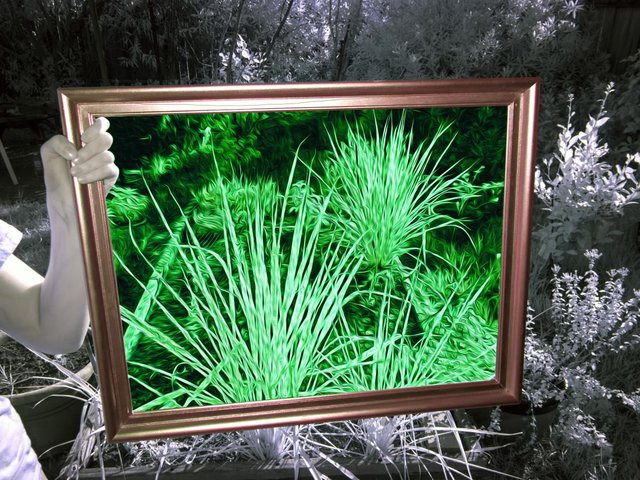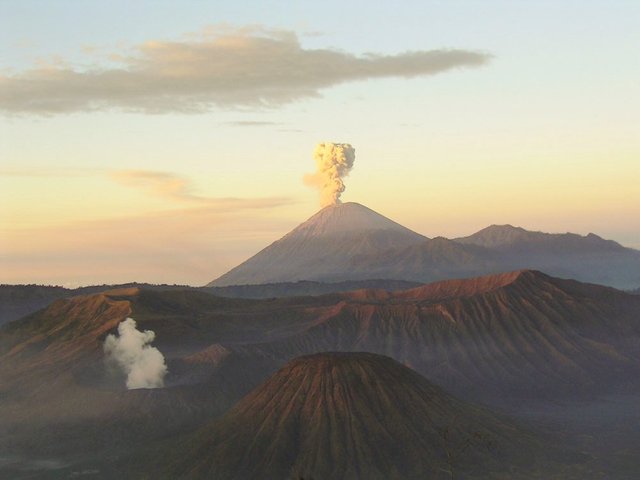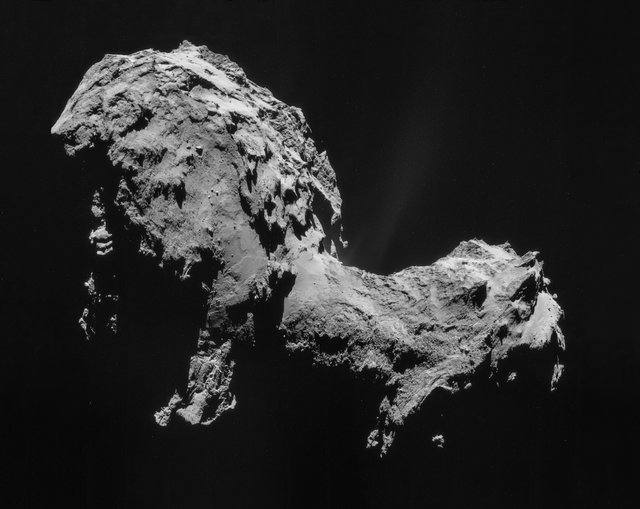Angels against Xylella
There are almost 350 species of plants that can be infected by the bacterium Xylella fastidiosa which, in addition to endangering the survival of the entire wooded areas, affects a large number of plants with great commercial interest. Now there is a new technology could help us to fight the problem.

Imagine CC0 Creative Commons - Source
A research published in Nature Plants has shown us how we are now able to identify, with impressive precision, the "sick" plants long before this manifested obvious symptoms, through the use of drones, we are able to perform hyper-spectral shots (capturing a large number of electromagnetic spectra). The old technology is based on the use of infrared only, instead, only allowed the identification of the disease in an advanced stages, when it was too late.
Article source
The sound of volcanoes
After the 2015 eruptions, the Cotopaxi volcano in Ecuador changed the frequency of the sound waves that it emits, showing, that there was a significant change in its’ structure.

Imagine CC0 Creative Commons - Source
All objects vibrate within a certain frequency, and volcanoes are no exception!: most of them vibrate at a frequency of about 1Hz. Cotopaxi instead vibrates at a frequency of the order of 0.2 Hz, 5 times lower. This means that the 2015 eruption has profoundly changed the structure of the volcano, giving it a unique feature in relation the sound emitted. In the future, the ability to attribute each volcano a characteristic frequency could be useful to understand what changes are taking place beneath the surface, thus anticipating the signs of an eruption.
The images of Rosetta
All the images taken by the Rosetta spacecraft, which date from 2014 to 2016 visited the comet 67P Churyumov-Gerasimenko, are now freely available. Never before seen until now are the images taken during the impact with the comet.

Imagine CC0 Creative Commons - Source
There are more than 100,000 images in archive, taken by Rosetta in its 12 years of journey in the solar system. During the last phases of the mission, the trajectory of the probe had become increasingly elliptical, allowing it to get very close to the surface of the comet. This allowed us to obtain very valuable images and information. Comets are rich in organic material, and they may have contributed to the formation of the oceans (and life) on Earth. All images are publicly available. here
Article source
Post of the day
Understanding our mind: How does fear develop in our mind? by @ideas-abstractas

Imagine CC0 Creative Commons - Source
@ideas-abstractas returns to talk to us about “fear”, after last week's posts; tonight he addresses the topic from a “physiological" point of view, asking how and why it has developed, and how it influences us.

Immagine CC0 Creative Commons, si ringrazia @mrazura per il logo ITASTEM.
CLICK HERE AND VOTE FOR DAVINCI.WITNESS
Keep in mind that for organizational reasons it’s necessary to use “steemstem” and “davinci-times” tags to be voted.
Greetings from the team @davinci.times:
@zest - @spaghettiscience - @rscalabrini
Angeli contro Xylella
Sono quasi 350 le specie di piante che possono essere infettate dal batterio Xylella fastidiosa che, oltre a mettere in pericolo la sopravvivenza di intere aree boschive, colpisce in modo importante anche numerose piante dal grande interesse commerciale. Ora una nuova tecnologia potrebbe aiutare a combattere il problema.

Imagine CC0 Creative Commons - Source
Una ricerca pubblicata su Nature Plants ha evidenziato come attraverso l’uso di droni in grado di effettuare riprese iper-spettrali (catturando cioè un gran numero di spettri elettromagnetici) abbia permesso di identificare con impressionante precisione la piante “malate” molto prima che quest manifestassero sintomi evidenti. La vecchia tecnologia basato sul solo uso degli infrarossi, invece, permetteva l’identificazione della malattia in stadio avanzato, quando era ormai troppo tardi.
Article source
Il suono dei vulcani
Dopo le eruzioni del 2015, il vulcano Cotopaxi, in Ecuador, ha cambiato la frequenza delle onde sonore emesse, mostrando che che avvenuto un cambiamento significativo nella sua struttura.

Imagine CC0 Creative Commons - Source
Tutti gli oggetti vibrano a determinate frequenze, e i vulcani non fanno eccezione: la maggior parte di essi vibra a una frequenza di circa 1Hz. Cotopaxi vibra invece a frequenza dell’ordine di 0.2 Hz, ben 5 volte più basse. Questo significa che l’eruzione del 2015 ha cambiato profondamente la struttura del vulcano, conferendo una caratteristica unica al suono emesso. In futuro, riuscire ad attribuire ad ogni vulcano una frequenza caratteristica potrebbe essere utile per capire quali cambiamenti stanno avvenendo sotto la superficie, anticipando così i segnali di un’eruzione.
Le immagini di Rosetta
Sono da poco fruibili liberamente tutte le immagini scattate dalla sonda Rosetta, che dal 2014 al 2016 ha visitato la cometa 67P Churyumov-Gerasimenko. Inedite fino ad ora le immagini scattate durante prima dell’impatto con la cometa.

Imagine CC0 Creative Commons - Source
Ci sono più di 100’000 immagini nell’archivio, scattate da Rosetta nei 12 anni del suo viaggio all’interno del sistema solare. Durante le ultime fasi della missione, la traiettoria della sonda è diventata sempre più ellittica, consentendole di avvicinarsi tantissimo alla superficie della cometa. Questo ha permesso di ottenere immagini e informazioni preziosissime. Le comete sono infatti ricche di materiale organico, e potrebbero aver contribuito alla formazione degli oceani (e della vita) sulla Terra. Tutte le immagini sono pubblicamente disponibili qui
Article source
Post del giorno
Understanding our mind: How does fear develop in our mind? by @ideas-abstractas

Imagine CC0 Creative Commons - Source
@ideas-abstractas torna a parlarci della paura, dopo i post della scorsa settimana; questa sera affronta l’argomento dal punto di vista “fisiologico”, chiedendosi come è perché essa si sia sviluppato, e in quale modo questa influisca su di noi.

Immagine CC0 Creative Commons, si ringrazia @mrazura per il logo ITASTEM.
CLICK HERE AND VOTE FOR DAVINCI.WITNESS
Si ricorda che per motivi organizzativi è necessario utilizzare le tag “steemstem” e “davinci-times” per essere votati.
Saluti dal team @davinci.times:
@zest - @spaghettiscience - @rscalabrini










Sempre un bel lavoro da parte dello staff e dagli autori che propongono articoli molto interessanti. Fear è un articolo che mi è piaciuto veramente molto!